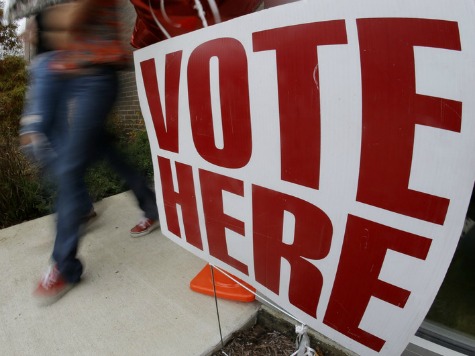No reform is more necessary for the integrity of the electoral process – and none has been subjected to more savage and disingenuous attacks — than voter ID laws. Of all these, the most outrageous is the charge that voter ID is the same as Jim Crow — the racist system that was used to disenfranchise Southern blacks for generations after Reconstruction. Voter ID laws currently in place in 20 states – though some have been delayed by activist courts or are being challenged by Eric Holder’s Justice Department – require voters to present a valid photo ID, like a driver’s license, before voting.
J. Christian Adams, formerly with the Justice Department’s Civil Rights Division, warns:
Liberal foundations, public interest law firms and advocacy groups have created a permanent network of experts and organizations devoted to an arcane but critical task: monopolizing the narrative on elections laws and procedures, Cloaking their actions in the rhetoric of civil rights and the right to vote, they seek to affect the outcome of elections. They challenge any efforts to protect the integrity of the ballot box by denying the possibility of vote fraud and crying “Jim Crow.”
Opponents of voter ID take a three-prong approach to defeating the reform. First, they argue that it’s unnecessary — that voter fraud is so rare as to be virtually non-existent. This constitutes a denial of both history and reality. Election fraud has always been with us, from ballot-box stuffing and the graveyard vote to voting by illegal immigrants. By requiring voters to prove their identity, ID laws help to ensure honest elections.
After trying to demonstrate that vote fraud is a myth (that there’s no legitimate reason for Voter ID laws), opponents then argue that the reform is motivated by pure malice – that it’s a partisan attempt to limit the minority vote.
In this regard, comparisons to Jim Crow are de rigueur. Jim Crow — which maintained white political power in the South for 100 years after the Civil War by disenfranchising blacks — was a tragic and shameful part of our history. But likening it to efforts to ensure honest and accurate elections by requiring all voters to prove they are who they say they are has no basis in reality. It is a smear tactic designed to short-circuit debate.
Unlike Jim Crow, Voter ID doesn’t target a particular race. It applies to all and is intended to keep corruption from diluting the votes of Americans of every race.
Finally, opponents argue that requiring proof of identity will prove an insurmountable obstacle to voting by many black Americans — that, for those who don’t already have a driver’s license, obtaining an alternative ID is both costly and difficult. But some form of identification is required to board a plane, cash a check, buy prescription medication (and many over-the-counter medicines), buy alcohol and tobacco products and receive public assistance. Apparently, cost and hardship are no barriers to obtaining photo ID here.
Voter ID is opposed by those who see racism everywhere, by those who use charges of racism to inflame minority voters, and by those who fear a secure ballot. Charges of Jim Crow, hurled with abandon, are groundless and an attempt to defeat reason with raw emotion. (For a comprehensive look at the real horrors of Jim Crow, please see the ACRU’s booklet “The Truth About Jim Crow.”)
A bipartisan Commission on Federal Election Reform in 2005 chaired by former President Jimmy Carter and former U.S. Secretary of State James A. Baker III found no evidence that requiring photo IDs would suppress the minority vote. The panel recommended a national photo ID system and a campaign to register voters.
“A complete, accurate, and current voter roll is essential to ensure that every eligible citizen who wants to vote can do so, that individuals who are ineligible cannot vote, and that citizens cannot vote more than once in the same election,” the report states on page 10. “Invalid voter files, which contain ineligible, duplicate, fictional, or deceased voters, are an invitation to fraud.”
In a 2008 column, Mr. Carter and Mr. Baker cited a study by American University’s Center for Democracy and Election Management that echoed the election commission. Among other things, researchers found that in three states Indiana, Mississippi and Maryland — only about 1.2 percent of registered voters had no photo ID.
Don Feder, columnist and author, is a Massachusetts-based political consultant. For the complete, extensive report, please visit http://www.theacru.org/the-truth-about-voter-id/

COMMENTS
Please let us know if you're having issues with commenting.